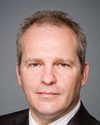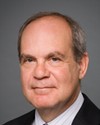Thank you, Mr. Chairman. I'd like to thank the committee for inviting me here today to give this presentation.
My name is Inka Milewski. I'm a marine biologist, and I'm the science advisor for the Conservation Council of New Brunswick. I've been working in the field doing research for the last 34 years.
The Conservation Council of New Brunswick is one of the oldest environmental citizen-based conservation organizations in Canada. It was founded in 1969 with a mandate to promote policies that would respect the environment and ensure sustainable use of its resources. We act on this mandate through public education, research, policy development, and special programming.
I'm here today to make the environmental and regulatory case for transitioning the open-net pen fish farming industry to closed containment aquaculture. Closed containment aquaculture will address the most serious environmental issues associated with this industry: the loss of habitat and the displacement of traditional fisheries. These are issues that have not been addressed and that cannot be fixed by the current management and regulatory regime. Moving open-net pen salmon farms onto land will also relieve DFO of its conflicting regulatory responsibilities—on the one hand its mandate to protect coastal habitat and wild fish, and on the other hand its mandate to promote and regulate an industry that is known to impact the very habitat and fish it is required to protect.
By volume, fish feces and uneaten feed are the major wastes released from open-net pen farms. This waste is largely invisible to you and me, to the public, and to regulators. DFO has acknowledged that open-net pen farms discharge organic waste, and this waste can have both a small and a large ecological footprint.
In 2005 DFO scientists reported that on a daily basis, salmon farms in one particular bay in southwest New Brunswick released three times more waste—organic waste—than did the sewage plant and the pulp mill that operate in the same bay. The author of that study, the DFO scientist, concluded, and I'm quoting:
...substantial changes to the functioning of the ecosystem have occurred due to the presence of the salmon farms.
According to DFO's website, and I'm quoting again:
Aquaculture operators must meet rigorous federal and provincial environmental standards.
Once an aquaculture facility is up and running, it is regularly monitored for compliance and must strictly adhere to provincial and federal statutes and regulations.
Federal and provincial regulators have agreed that there is only one measure of environmental quality that will be monitored, and that's sulphide levels in the sediments under the farms. DFO has not defined the sulphide limit that results in mandatory regulatory action. An authorization under subsection 35(1) of the federal Fisheries Act, which is this HADD authorization, may be required when sulphide levels exceed 4,500 micromolars.
Options for avoiding this authorization include moving the fish from the farms to another location, reducing the number of fish, or fallowing the site, meaning removing the fish for a period of time and then bringing the fish back in. DFO has determined that sulphide levels over 3,000 result in a 70% to 90% loss of the biological diversity around those farms. At levels over 6,000, ninety percent of the biodiversity is lost.
Annual monitoring in New Brunswick shows that 20% of salmon farms exceed the 1,500 level. This is the level where 40% to 60% of the biodiversity is lost.
For example, here are some monitoring results from a fish farm in Passamaquoddy Bay in southwestern New Brunswick. You'll note that in 2007, the sulphide levels exceeded 9,000. Fish were removed from the site for a couple of years, but once the site went back into production, the sulphide levels shot back to over 7,000. No sanctions were issued against this farm. This farm still operates.
DFO provincial managers and the aquaculture industry believe that simply fallowing—meaning removing the fish for a while—for as little as two months to two years will allow the sediments to recover. Indeed, as you can see, the sulfide levels do drop, but DFO has yet to prove their assumption that the biological community in those sediments around the fish farm recover after the fallowing process.
In 2002 I conducted a study to test the assumption that fallowing indeed results in a recovery of the sediments. This Penn Island farm in Crow Harbour had been in operation for only 18 months, which is one production cycle. After the last fish was harvested and the nets were removed in August 2002, I began sampling the bottom around the fish farm and a nearby control site. I resampled the site in 2003 and again in 2004. Yes, the sulfide levels did recover, but after two years of sampling, the salmon farm sites still had 35% fewer species than my control site.
I'm currently conducting a study in Shelburne Harbour in southwest Nova Scotia to examine the status and the recovery of the habitat around a recently vacated salmon farm. Now, the history of this farm is that it began operating in 1991, expanded in 1995, and transferred ownership in 2006. In 2009 production was suspended, and it resumed operation in 2010. It was vacated in September of this year, and I began sampling in October.
The monitoring history of this site shows that in 2007 and 2008 the sulfide levels actually exceeded the DFO level that may require a subsection 35(1) authorization. None was issued. The site was fallowed for a year. Again, the sulfide levels dropped below 1,500, predictably, but within a year of the farm's returning to production, the sulfide levels were back up to 3,000. This site has been vacated. It's been moved 100 metres north, and it's a farm that will produce three times more salmon than it has currently been producing.
I'll move to the next slide. My preliminary analysis indicates not only differences in the environmental quality of the sediments between the reference and the farm sites, but also differences in species abundance. The picture on the left is a control site, a reference site. The sediment is a light brown mud. The holes you see are likely burrows of various worms, sea cucumbers, crustacean clams. This is all food for groundfish, lobster, and other commercial as well as non-commercial species. We counted 16 different species in this control site.
The picture on the right depicts the sea bottom near and under the fish farm. The sediment is black. It's covered in extensive patches of white bacterial mats, which are typical of heavily polluted benthic environments. In it we counted only seven species.
The farm site samples on the right were dominated by two species. They're called threadworms. In a sample the size of, say, a margarine container, we found over 500 worms. This is not food for lobsters and it's not food for groundfish. These worms are indicative of highly polluted environments. Despite claims made about how rigorously aquaculture operations are monitored and managed, there are in fact no federal or provincial regulations to prevent the release of organic and nutrient waste from fish farms. The evidence shows, and I think I've shown it here, that open-net pen farms continue to operate, even though environmental standards are exceeded and the mitigation measures, that is, fallowing, allowing the farm to recover, are insufficient and incomplete to restore habitat function and health.
The federal and provincial environmental assessment process that is supposed to identify sensitive fish habitat and prevent farms from occupying the space of traditional fisheries has also been a failure. A 2011 study by a University of New Brunswick researcher has documented fishermen's observations around the environmental changes that occur around their fishing grounds.
Within two years of a salmon farm beginning to operate, fishermen report that female lobsters carrying eggs abandon the area. Scallop and sea urchin shells become brittle. Scallop meat and sea urchin roe become discoloured. And herring no longer frequent those waters.
Transitioning open net-pen farms to closed containment systems will solve the problem of habitat loss and degradation by fish farms. And it will address the concerns of traditional fishermen about the loss and the impact its having on their fisheries.
Last, by its own admission, DFO has acknowledged that it has not done a good job of protecting our oceans and our living resources. Its 2010 report, the marine status and trends report, painted a grim picture of the health of our oceans and acknowledged that “[i]ndustry and development have, or are threatening to, impact most ecosystems”. In particular, they single out the coastal zone, where both the aquaculture industry and traditional fishermen compete for space.
Moving aquaculture out of coastal waters will relieve DFO of its conflicting regulatory responsibility so that it can focus on its principal mandate, which is ocean protection, restoration, and conservation.
Thank you.







